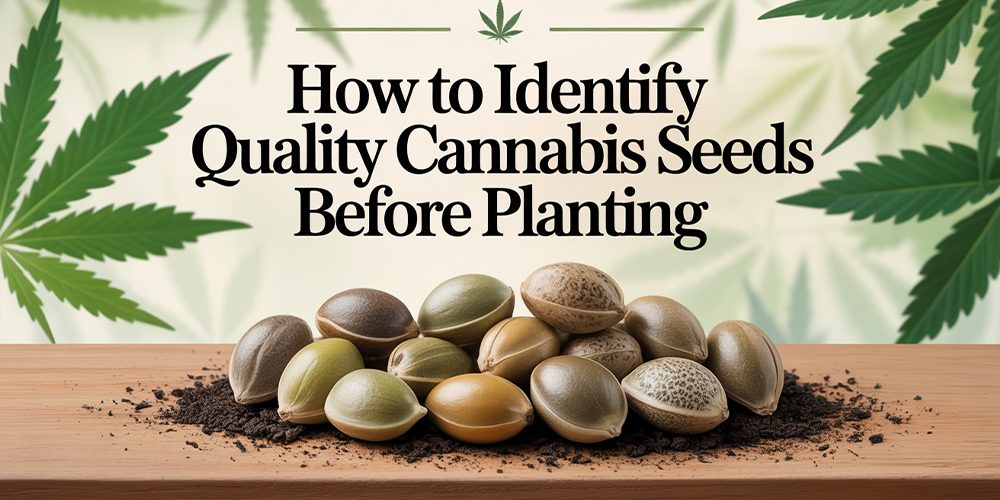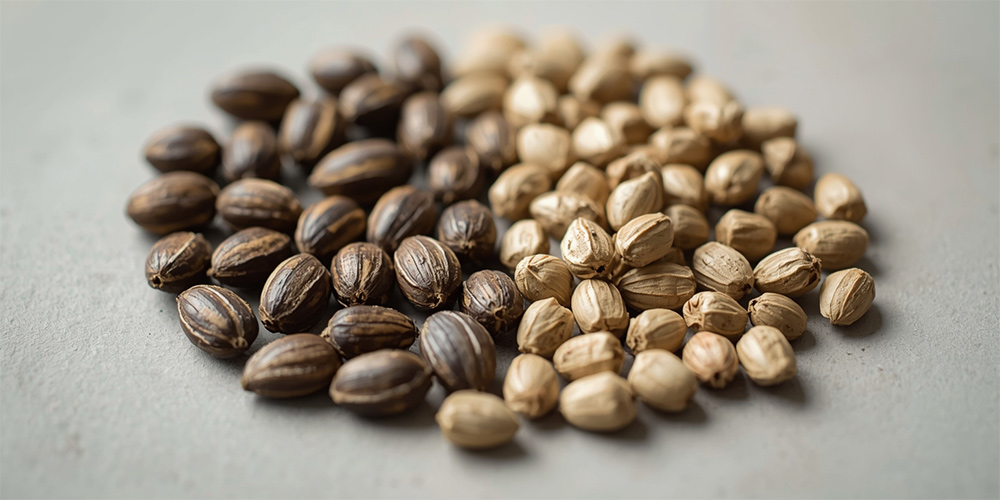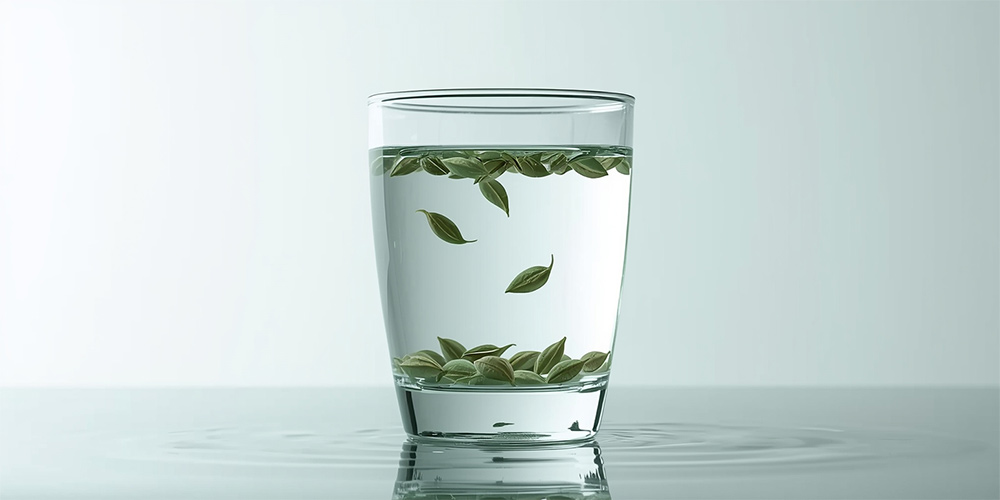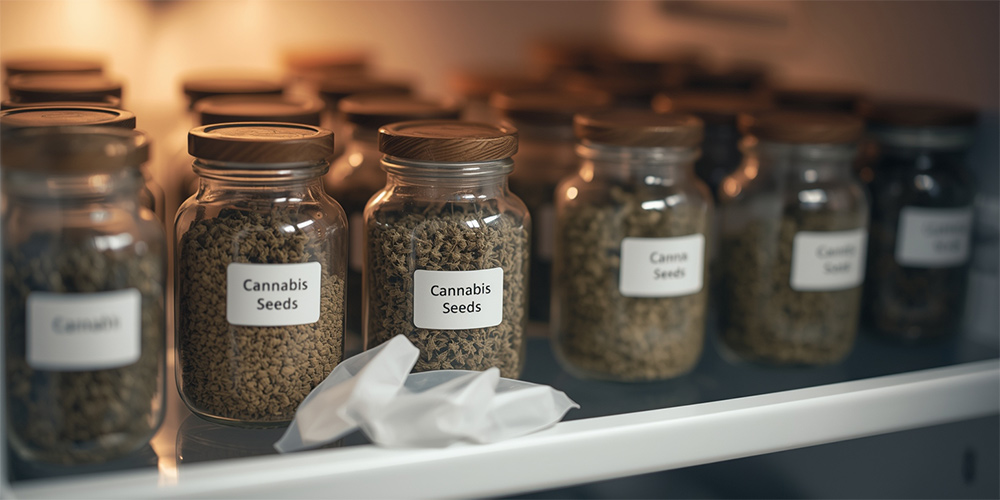
Home » How to Identify Quality Cannabis Seeds Before Planting
How to Identify Quality Cannabis Seeds Before Planting
Few things are more disappointing to a grower than discovering that the seeds they planted were never viable in the first place. Poor-quality cannabis seeds can waste weeks of preparation, equipment, and effort. Whether you’re a home grower in the ACT or simply a collector interested in genetics, learning how to identify high-quality cannabis seeds before planting is essential.
This guide explains exactly what to look for — using practical, research-based methods that can be done at home. You’ll discover how to inspect, test, and store your seeds for the best possible germination success, all while staying informed about the Australian climate and legal considerations.
Why Seed Quality Matters
Cannabis seeds are living organisms. Their ability to germinate depends on internal vitality, moisture balance, and genetic stability. Low-quality seeds often result in weak seedlings, delayed sprouting, or no growth at all.
According to a 2024 agronomy study at the University of Guelph, seed density and shell integrity directly correlate with germination success — dense, undamaged seeds were shown to sprout up to 35% more reliably than lighter or cracked ones.
Key takeaway: A healthy seed gives you the best start — once planted, there’s no fixing a weak embryo.
The Five-Sense Seed Test — A Simple Way to Check Quality

Sight – Visual Inspection
Healthy cannabis seeds share several visible traits:
| Feature | High-Quality Seed | Low-Quality Seed |
| Colour | Dark brown, grey, or tiger-striped | Pale green or white |
| Texture | Smooth, slightly glossy wax coating | Dull, flaky, or powdery |
| Shape | Round, symmetrical | Flat, misshapen |
| Size | Medium–large, consistent | Very small or shrivelled |
A 2023 study by the University of Sydney Plant Sciences Department confirmed that mature seeds typically develop darker pigmentation and harder shells — indicators of full embryo development.
Touch – The Pressure Test
Hold a seed between your thumb and forefinger and gently squeeze. A good seed will feel solid and resist pressure. If it collapses or cracks easily, it’s immature or dried beyond viability.
Tip: Apply only light pressure — even healthy seeds can be damaged if squeezed too hard.
Sound – The Rattle Test
Place a few seeds in a small container and shake gently. If you hear a faint rattle, the embryo may have dried out or separated from the shell. A quiet, heavy soundless shake usually indicates the seed is well-formed.

Float – The Quick Viability Test
One of the simplest at-home assessments:
- Fill a clean glass with room-temperature (not hot) water.
- Drop your seeds in and wait for one to two hours.
- Seeds that sink tend to be viable — their dense embryo pulls them down.
- Seeds that float are usually underdeveloped or hollow.
Research conducted in 2023 at the University of Sydney Agronomy Lab found that density testing (the principle behind the float test) accurately predicted germination potential in over 80% of samples.
Note: Don’t leave seeds submerged for more than two hours unless you intend to germinate immediately, as over-soaking may cause premature softening.
Time – The Age & Storage Factor
Even the best seed declines with age. Over time, moisture loss and enzyme degradation reduce viability.
- Fresh seeds (under 12 months): Usually >90% germination rate.
- Stored 1–3 years: Moderate germination, slower sprouting.
- Stored 3 years+: Unpredictable results without cold, controlled storage.
A 2024 report by CSIRO’s Seed Bank Division demonstrated that moisture-controlled refrigeration can extend cannabis seed viability for up to five years.
Key takeaway: The fresher and better-stored the seed, the higher your chances of success.
Once you know what healthy seeds look and feel like, it’s equally useful to understand the warning signs of poor quality. See our detailed guide on How to Recognize Bad or Contaminated Cannabis Seeds for visual cues and contamination risks.
Understanding Cannabis Seed Structure
Each cannabis seed consists of three key parts:
- Seed coat (testa): Hard shell protecting the embryo from light and moisture.
- Endosperm: Nutrient store that fuels early growth.
- Embryo: The living plant waiting for the right conditions.
A cracked or thin shell exposes the embryo to oxygen and humidity, accelerating decay — a major cause of germination failure in stored seeds.

How to Store Cannabis Seeds in Australian Conditions
Australia’s heat and humidity can quickly damage seed viability. Follow these guidelines to preserve your collection:
- Keep it dark: Light triggers metabolic activity that shortens lifespan.
- Control temperature: Ideal storage is 6–10 °C — a sealed jar in the refrigerator works well.
- Manage humidity: Include a silica gel or rice desiccant pack to absorb moisture.
- Use airtight containers: Dark glass jars or vacuum-sealed bags prevent air exchange.
- Avoid freezing unless professionally sealed: Rapid ice formation can rupture cells.
According to CSIRO research (2024), seeds stored at consistent low temperatures with desiccants retained up to 85% germination potential after four years — compared to under 40% in room-temperature storage.
Key takeaway: Humidity, not temperature, is the main threat in most Australian homes. Keep seeds cool and dry above all else.
Choosing Reliable Cannabis Seeds in Australia
With the growing number of local and international seed suppliers, choosing reliable genetics is critical.
Checklist for sourcing seeds:
- Buy from breeders or suppliers with verified germination testing.
- Check packaging for strain name, harvest year, and breeder ID.
- Inspect storage conditions before purchase — avoid vendors who display seeds in direct sunlight or open containers.
- Look for Australian-adapted genetics, particularly for warm coastal climates or dry inland zones.
Pro Tip: When buying online, read customer reviews about seed maturity and delivery conditions — damaged packaging often means compromised seeds.
If you’re interested in expanding your collection beyond the basics, explore Rare Cannabis Seeds Collectors Love to discover unique genetics prized for their appearance, rarity, and lineage.
Common Mistakes When Testing Cannabis Seeds
- Pressing too hard during the squeeze test.
- Using chlorinated tap water for float testing.
- Leaving seeds submerged longer than two hours.
- Handling seeds with damp or oily fingers.
- Storing in plastic bags without moisture control.
Expert Tip: Label seed batches with date and strain to track viability over time — a small step that saves confusion later.
Seed Quality Checklist for Growers
- Inspect colour, shell, and markings under good light.
- Check firmness with a light squeeze.
- Perform a quick float test for density.
- Store in airtight, cool, and dark conditions.
- Verify legal compliance before germination.
Keep this checklist handy before every grow season.
Frequently Asked Questions
Q1. How can I tell if a cannabis seed is good?
A viable seed is dark, firm, evenly shaped, and sinks in water during a float test.
Q2. Do cannabis seeds go bad?
Yes. After about two years, germination success declines unless seeds are kept cool and dry.
Q3. What colour should healthy cannabis seeds be?
Dark brown or mottled with slight gloss; pale green indicates immaturity.
Conclusion
Identifying quality cannabis seeds before planting is one of the smartest steps a grower can take. By using the five-sense test, performing a quick float check, and storing seeds correctly for Australia’s climate, you can dramatically improve your germination success.
Seed quality isn’t just about genetics — it’s about how well the embryo has been preserved from harvest to planting. When you start with strong, viable seeds, every part of the grow becomes easier and more rewarding.
Final Thought: A few minutes of careful inspection today can save you months of disappointment tomorrow.

